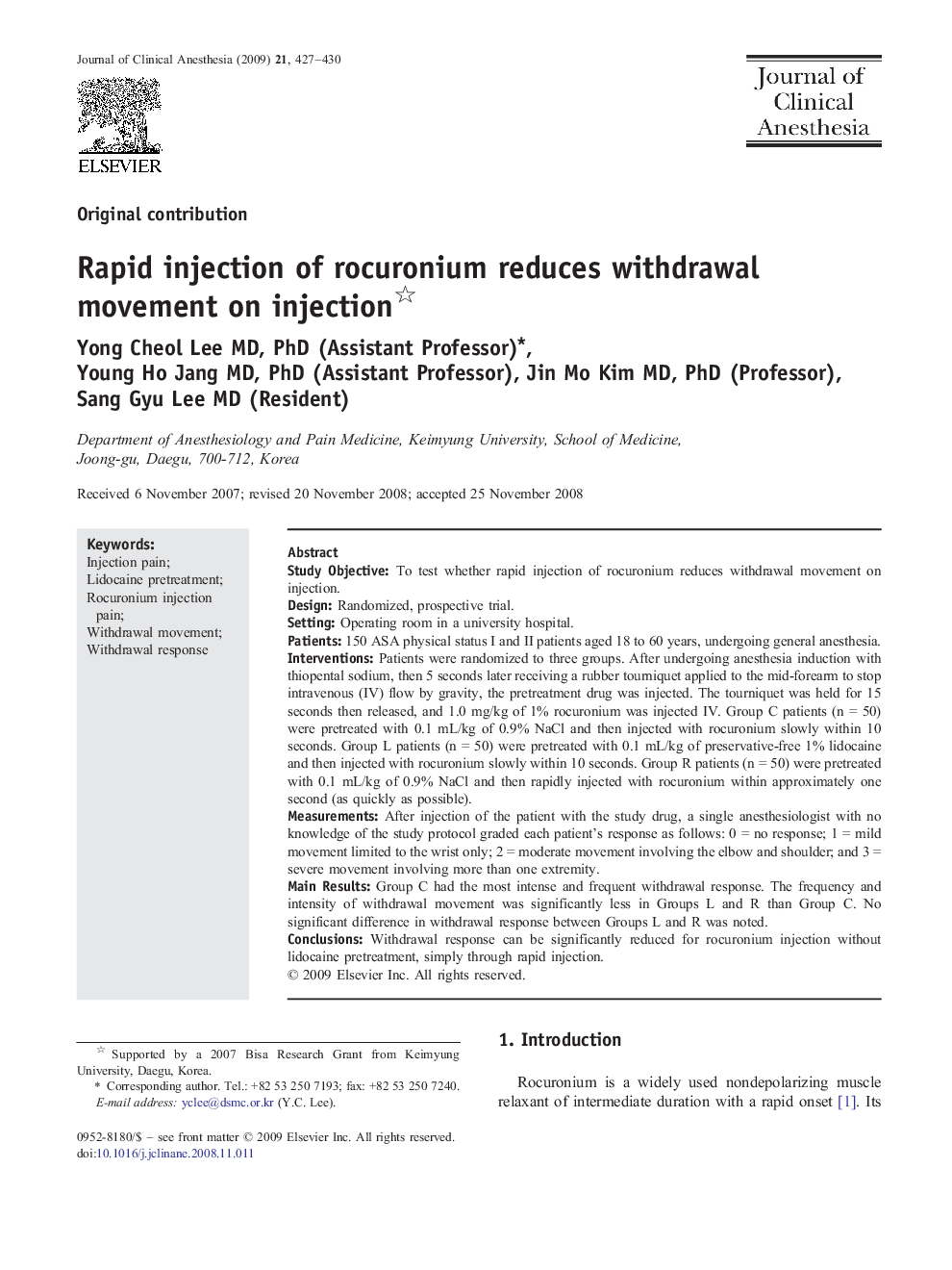| Article ID | Journal | Published Year | Pages | File Type |
|---|---|---|---|---|
| 2763371 | Journal of Clinical Anesthesia | 2009 | 4 Pages |
Study ObjectiveTo test whether rapid injection of rocuronium reduces withdrawal movement on injection.DesignRandomized, prospective trial.SettingOperating room in a university hospital.Patients150 ASA physical status I and II patients aged 18 to 60 years, undergoing general anesthesia.InterventionsPatients were randomized to three groups. After undergoing anesthesia induction with thiopental sodium, then 5 seconds later receiving a rubber tourniquet applied to the mid-forearm to stop intravenous (IV) flow by gravity, the pretreatment drug was injected. The tourniquet was held for 15 seconds then released, and 1.0 mg/kg of 1% rocuronium was injected IV. Group C patients (n = 50) were pretreated with 0.1 mL/kg of 0.9% NaCl and then injected with rocuronium slowly within 10 seconds. Group L patients (n = 50) were pretreated with 0.1 mL/kg of preservative-free 1% lidocaine and then injected with rocuronium slowly within 10 seconds. Group R patients (n = 50) were pretreated with 0.1 mL/kg of 0.9% NaCl and then rapidly injected with rocuronium within approximately one second (as quickly as possible).MeasurementsAfter injection of the patient with the study drug, a single anesthesiologist with no knowledge of the study protocol graded each patient's response as follows: 0 = no response; 1 = mild movement limited to the wrist only; 2 = moderate movement involving the elbow and shoulder; and 3 = severe movement involving more than one extremity.Main ResultsGroup C had the most intense and frequent withdrawal response. The frequency and intensity of withdrawal movement was significantly less in Groups L and R than Group C. No significant difference in withdrawal response between Groups L and R was noted.ConclusionsWithdrawal response can be significantly reduced for rocuronium injection without lidocaine pretreatment, simply through rapid injection.
